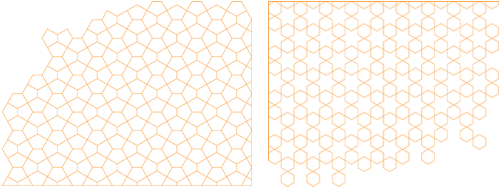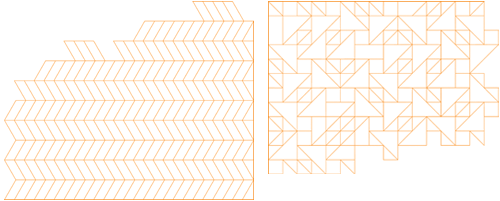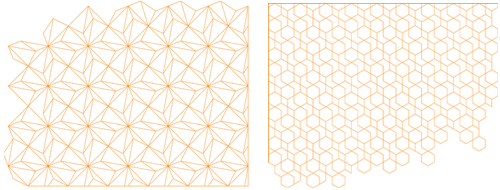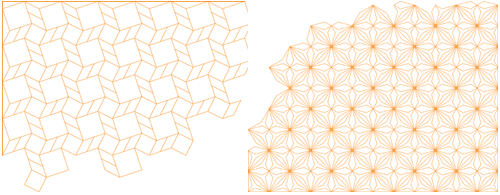Form Follows Fun: Design Options in Modern Ceiling and Wall Systems
Technology and Performance
 |
BIM-driven, CNC fabrication offers precise fitting of elements, allowing ceiling and wall panels to be coordinated with lighting and HVAC fixtures and other building elements. This detail is fr as seen in this detail from the Newseum, Washington D.C. Image courtesy of Ceilings Plus |
The combination of BIM and CNC fabrication has not only increased the availability and affordability of a broad range of aesthetic options, but also improved the performance of panel systems. A mass-customized panel can be fabricated with dimensional accuracy to within five thousandths of an inch.
Each panel is individually trimmed to the required configuration, perforated for acoustical control, notched to accept installation hardware and lighting fixtures, and then folded to create stiffened edges, assuring that the panel integrates with the ceiling or wall system, and the building systems, exactly as designed. Even the most complex patterns can be prefabricated to fit precisely in the field. The use of BIM also assures closer coordination between adjacent members. For example, holes in a support member are precisely aligned with attachment clips installed on the mating ceiling panel; installation is faster and components fit together more tightly without disfiguring gaps or irregularities. Components arrive at the jobsite ready to install, and fit together precisely.
Other techniques reduce the cost of fabricating curved panels. Curved panels no longer require the expense of separately fabricating and attaching curved angles to stiffen the edges of panels, or the complications of finishing the panels after assembly. Now, prefinished panels with integrally-formed returns can be given both concave and convex curvatures.
Practical Considerations
Panel designs, including tessellated ones, must be compatible with lighting fixtures, air diffusers, fire sprinklers, and other fixtures that must be integrated into a complete ceiling or wall system. One approach is to locate fixtures in gaps between panels or in voids created by omitting panels at regular intervals.
lternatively, openings in panels can be factory-punched with high precision to minimize field cutting and assure that devices are located where required for optimum visual appeal.
Tessellated patterns require special attention in design. In some cases, this is due to the need to integrate them with building systems that are legacies of the rectangular era.
While the number of tessellation patterns is practically unlimited, architectural applications are typically constrained by construction practicalities. For example, the most common installation method for tessellated ceiling panels - the torsion spring -clips the panel to a concealed suspension system; the springs hold the panels securely in place while still allowing individual panels to be easily removed and reinstalled for above-ceiling access. For exterior panels, cam locks can be added to resist wind loads.
Wall panels are typically set into slotted hat channels or onto Z-clips. It is most economical to select a tessellation that can be superimposed onto parallel or other regularly-spaced suspension members; more complex suspension systems will slow construction by requiring rigorous layout and assembly. Layouts requiring suspension systems with radial or other symmetries are also possible.
Labor costs to install tessellated ceilings are surprisingly affordable. First, the lightweight metal and wood panels can be produced in large sizes that reduce the number of separate pieces to be handled; a complex design with many small pieces can be factory-assembled into more conveniently sized panels. BIM makes it possible to factory fabricate almost all penetrations and perimeter pieces, eliminating field cutting. Above-ceiling suspension members and behind-wall brackets are customized for rapid assembly and coordination with panel installation points. Each piece is coded to match shop drawings to identify location on a project, and parts are packaged and shipped to facilitate a logical installation sequence.
Shape of Ceilings to Come
While tessellation is an ancient art, new possibilities are still being discovered. For example, Penrose tessellations that form quasi-crystalline patterns were not defined until the 1970s. The recently described ‘Café Wall Illusion' causes parallel lines to appear to converge and diverge. With the speed and fluidity of digital design and fabrication, we can expect to be amazed by the new forms still yet to be created in the next few years.
Tessellation Examples
 |
 |
 |
 |









